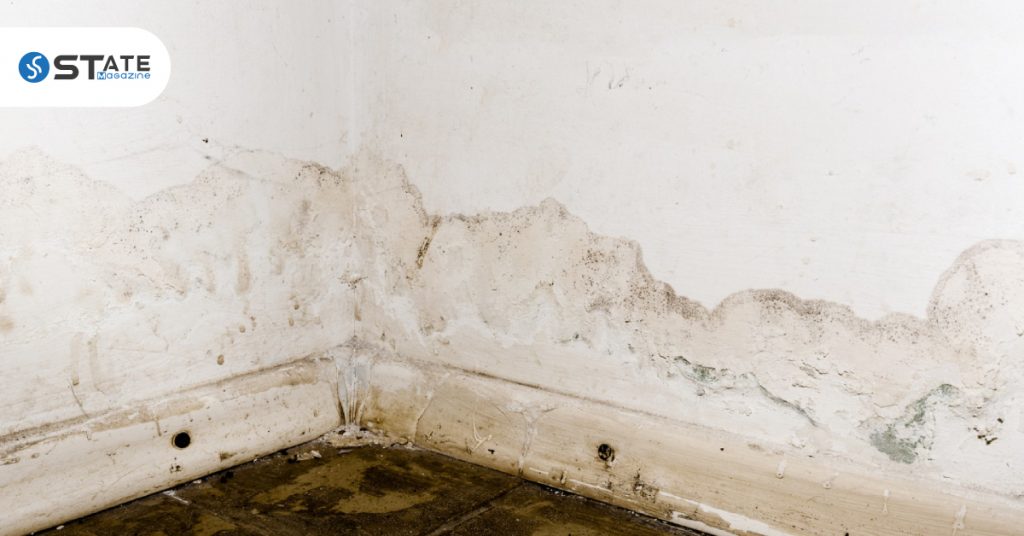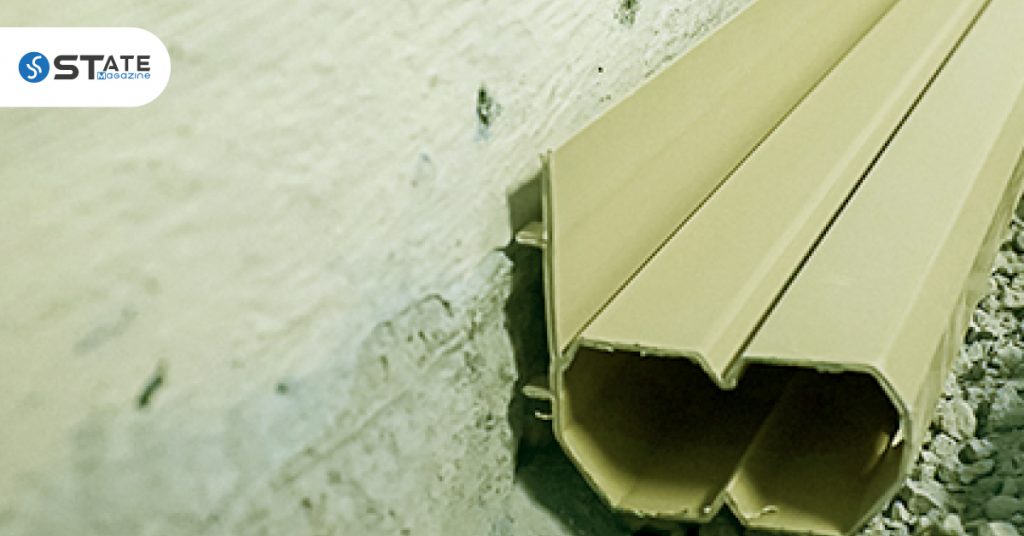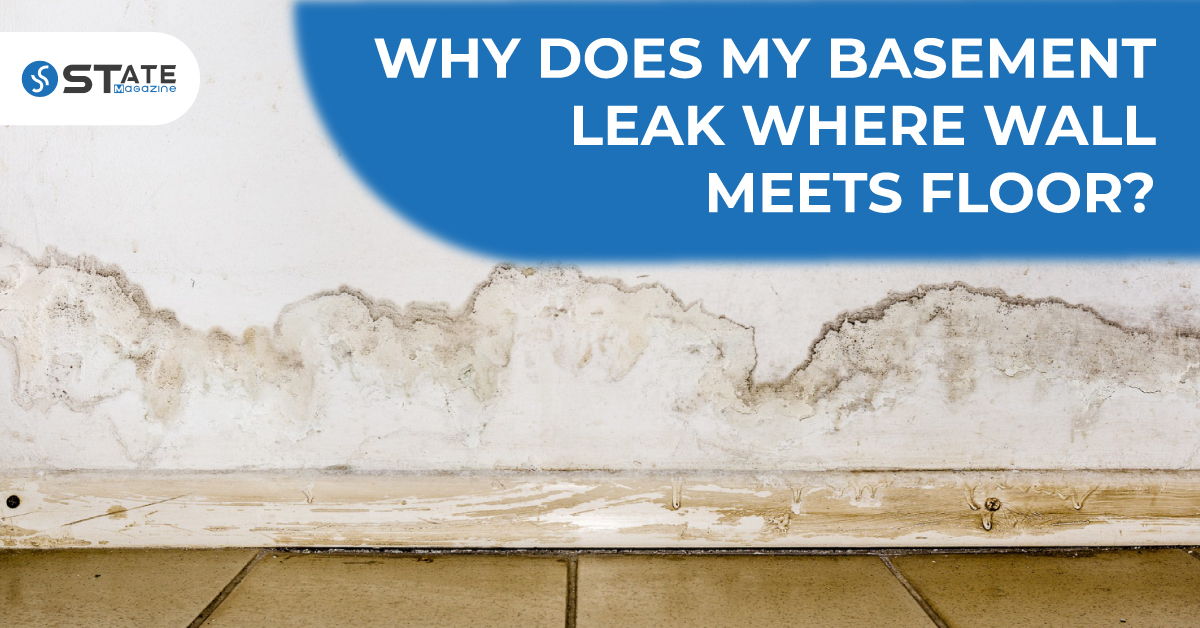It might be a fairly common sight for basement leaks where wall meets floor. This occurs due to hydrostatic pressure created by water, mostly after raining or melting snow. As this hydrostatic pressure forces up water against the foundation of the house, cracks and gaps will let in water into the basement. It is necessary to solve this issue as soon as possible, especially if you plan to use it as a living space. So, let’s find out how this happens and the possible solutions that you can use to overcome it.
The Gap Between the Basement Wall and Floor
Contents
It is common to have a gap between the slab and foundation wall of the basement that runs along the perimeter of the foundation. This is known as the cove joint, and it exists due to the way the foundation was arranged in the construction of the house. The basement is constructed first by excavating to the required depth. The foundation footings normally have a narrow channel along the top, known as the keyway. When this cures, the concrete is poured to keep the walls aligned correctly. After the walls are cured the basement floor is poured with concrete. Hence, this cove joint is created as the walls, and the floor is poured separately.
Cove Joint Leaks
You may see water coming in the basement where walls meet floor, commonly known as the cove joint leak. This happens when the constant changes in the soil impose a lot of pressure on the basement walls and floor. Hence, the water or moisture finds a path of least resistance and seeps in through the gap between the basement wall and floor. It is very important to take care of this basement problem. Long-term water leaks can cause damage to floor coverings and things stored inside. It may even leave stains on the walls and floor. Therefore, it is necessary to attend to this problem and find possible solutions to prevent basement leaks.
Repairing Cove Joint Leaks

The first thing that comes to your mind when you see a cove joint leak is to seal it to prevent any more water from leaking in. This is done by most homeowners, using hydraulic cement or another waterproof sealant to hide the leak. However, this is not the proper way to fix a cove joint leak for long-term benefit.
The water leak is caused by hydraulic pressure, it has enough pressure to seep through even the small openings. Applying a coat of cement, epoxy, caulk, or sealant would not remove the leak. It would only be a temporary solution until the water passes around the sealed area and find another way to leak in. The sealant material can even pop out due to the pressure, and then the water will start leaking again. As this is a temporary solution, you need to find a better solution to resist the leaks.
Since the water coming in the basement where walls meet floor cannot be resisted, the better option is to control the leaking water. The best method of sealing basement leaks where wall meets floor is by installing a drain tile system besides the footing. The drain tile consists of a perforated plastic pipe fixed in washed stone under the floor. The drain tiles can collect the moisture that leaks from the cove joint. Then it is directed to the sump pump that will pump the water out of the basement.
Drain tiles are easy to be installed and a durable solution for this. It requires minimum effort in maintenance and is a cost-effective solution to keep your basement dry from cove joint leaks. This can be installed on the interior or the exterior of the basement, depending on the type of the basement and your preference. These types have different features and benefits that you need to know before choosing one.
Interior Drain Tile

This is the most common type of drain type installation, which needs breaking the floor 18 inches from the foundation wall to create a trench of about 12 inches wide. First, a layer of washed gravel is added to this trench. Then a perforated drain pipe is installed over it along the whole length of the trench, connecting to the sump pump pit. Then the drain pump is covered by adding more washed gravel to the trench.
Finally, concrete is added to seal this system, making it invisible after the installation. As this is completely hidden from the normal view of the basement, there is no damage to the landscape or your house. In addition, this will help reduce the hydrostatic pressure by directing the water to the sump pump, which would then get discharged away from the foundation of the basement.
Why Choose Interior Drain Tile?
- Relieves hydrostatic pressure under the floor
- This can catch water that collects in basement window wells
- Quick and easy installation
- No excavation is needed outside the home
Cost of Interior Drain Tile System
The interior drain tile system is the most effective solution out of the two. It is also the most cost-efficient installation and can be installed within one or two days. The total cost for this ranges between $8,000 and $15,000.
Exterior Drain Tile
In the same way, this also works to relieve the hydrostatic pressure and direct the water to the outside. However, this installation is expensive and less favored by most homeowners. Everything around the foundation, such as porches, stairs, plants, and even sections of driveways, would need to be removed before you start this. Make sure to remove all the masonry work and the air conditioning units out of the way before you start.
Then to install the exterior drain tile, excavate outside along the perimeter of the foundation. Although this is quite expensive, exterior drain tile is the only option if the basement is fully furnished and used as a living space.
Why Choose Exterior Drain Tile?
- Redirects water before it gets to the wall or foundation
- Protects the basement wall from damage
- Ideal for houses with foundations made of stone, concrete, or bricks
- Installation avoids disruption for already furnished basements
Cost of Exterior Drain Tile System
As mentioned before, this method is more expensive than the other. It is also fairly risky as the area needs to be excavated. The cost of an exterior drain tile system ranges from $14,000 to $35,000.
How Long Does a Drain Tile System Last?
A drain tile system would last for many decades if installed correctly. The drain tile or weeping tile has a longer life expectancy as modern material is used. Even the older clay weeping tiles would also last quite long before deteriorating. However, they may get clogged with soil and roots after many years.
Why Does it Leak While Having an Exterior Drain?
This can even clog the pipes, and sometimes, filter fiber is not added to this system. Servicing the exterior drain tile system is a difficult task as it requires excavating outside the foundation along its perimeter. Usually, a new exterior drain tile system is installed in homes to replace the old exterior drain system that has failed its function.
Frequently Asked Questions

Is there supposed to be a gap between slab and foundation wall?
It is common to have a gap between the basement walls and floor in houses with a basement. This might be due to either a floating slab or a French drain.
How do you seal cracks between basement walls and floors?
The cracks from the foundation are usually a major cause that leads to water leaking through the basement floor. You can apply hydraulic cement to this joint to seal it.
Can you fix a foundation leak from the inside?
Regardless of the material of construction, basement leak repairs can be done from the inside or the outside of the house. For example, if you have a poured concrete foundation, then both interior and exterior waterproofing repairs can effectively prevent leaks.
Can water come up through a concrete floor?
Although concrete is porous, water isn’t going to soak up through it. But it allows water to seep through when there is a lot of water. Concrete cracking is a possible way of seeping water through the slab.
Conclusion
If you find any basement leaks where wall meets floor, it is necessary to contact a professional basement waterproofing contractor. They will examine the situation and determine the best solution to stop the leak permanently. You may have got an overall idea about the two ways to prevent basement water leaks. But depending on your situation, it is necessary to get professional advice on what you can do to prevent water from leaking.
If you found this article useful, you can also find the cost to fill a 20-pound propane tank.


